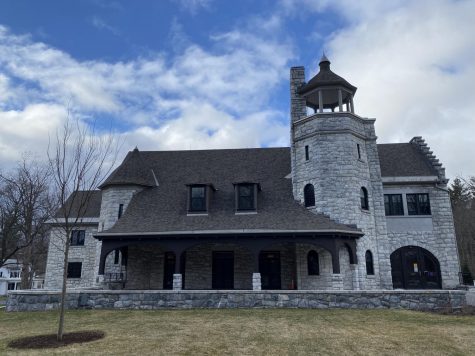1990s through present: College’s fight against fraternities continues; St. Anthony comes to light, twice
April 7, 2000
In August 1992, according to an internal Dean’s Office memo, two students approached Fix, at the time the outgoing dean of the College, to express their concerns about underground fraternities.
“Their sense is that there are at least two fraternities — a smaller one which they think is loosely organized and a larger one involving an off campus house,” the memo reads. “The smaller one they think has disbanded.”
The students told the deans that they believed the larger fraternity was affiliated with Greek letters, though they didn’t know which ones. But a hand-scribbled note at the top of the memo reads “Delta Psi/St Anthony” (Delta Psi is another name for St. Anthony Hall).
Spurred to action by the two students’ account, Dean of the College Joan Edwards (now a professor of biology) sent a letter on Nov. 18, 1992, to all students reminding them of the College’s ban on fraternities.
“We will not hesitate to take significant disciplinary action — including suspension or expulsions — against students who are found to be participating in such organizations,” she wrote.
In its article about the letter the following week, the Record spoke to several anonymous students who said that underground fraternities existed. One junior said a fraternity had tried to recruit him in his first year. “You guys understand about the importance of the old-boy network, the importance of tradition at Williams, and how to have a good time,” he said a senior in the fraternity had told him.
Whether this fraternity was St. Anthony Hall or some other group is unclear. But in fall 2003, it emerged that a co-ed chapter of St. Anthony Hall had been operating since the 1970s. It called itself the Vermont Literary Society (VLS), the Record reported, and its members met weekly to “share literary works and personal experiences.”
The Record revealed that Jack Shaw ’62, a St. Anthony alum who at the time was the Pentagon’s deputy undersecretary for international technology security, had tried and failed to negotiate with the College to let the fraternity use its old “goat room” — i.e. meeting room — in what was by then the Center for Development Economics.
“By this time next year I plan to have the Lambda [Williams] Chapter’s presence quietly acknowledged and take possession of their marvelous [goat room],” he wrote in the spring/summer 2002 issue of the national fraternity’s publication. “This effort will not be bloodless and I anticipate opposition from a variety of quarters, but our flag will once again fly in Williamstown.”
The deans offered amnesty to any VLS members who came forward, but no one did. The revelations about the VLS exploded onto the pages of the Record’s opinions section, where some students decried the fraternity for its exclusivity.
“Williams is a society based upon a spirit of openness and tolerance and equal and fair opportunity, all under the aegis of common rules,” Ben Cronin ’05 wrote in an op-ed. “St. Anthony Hall, and any other secret frats that may be here, are by their very existence contrary to that spirit.”

Underground fraternities faded from the public view over the next several years. Then, last fall, a Record investigation pointed to evidence of the VLS’s continued existence, citing tax forms and references to the VLS on the website of the national St. Anthony Hall. The graduate organization of the College’s chapter of St. Anthony Hall, the 1853 Foundation, had been donating about $20,000 of its roughly $450,000 each year to the VLS for “research and educational purposes.” Alums who graduated as recently as 2016 were listed on tax forms as members of the 1853 Foundation.
The VLS has been defunct since August, however. And it remains to be seen whether the 1853 Foundation will continue to provide donations to a revived VLS or a similar organization now that the College is aware of its existence.
As for the Partridge trust: It finally matured in 2005, 20 years after the death of Woodard and almost a century after the death of Partridge. The money ultimately amounted to $1.4 million, split between the College and the national TDX organization, according to the College’s class notes from August 2005.
The underground chapter of TDX, which had once been sustained in part by the promise of getting the Partridge money, was by then long gone. Nevertheless, President Morty Schapiro invited TDX alums to Williamstown for a cocktail party to celebrate the release of the money from the trust.
Schapiro was “gracious as always,” said Bill Garth ’67 (who was once the president of the chapter’s alumni association), and at the party there was little sadness about the end of TDX. Older alums, by then dead, may have been more attached to fraternities. But Garth said he felt that the College had actually changed for the better, especially with its increased gender and racial diversity.
“The demise of fraternities was never a source of sadness or rancor in my class or those I knew that followed,” he recently told the Record. “It was a fellowship to enjoy in the Purple Valley, but never a passionate cause, at least not for me.”
If you have any information about underground fraternities, past or present, please email [email protected].
